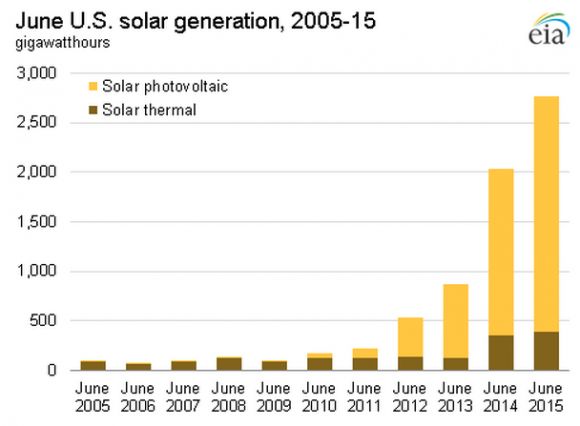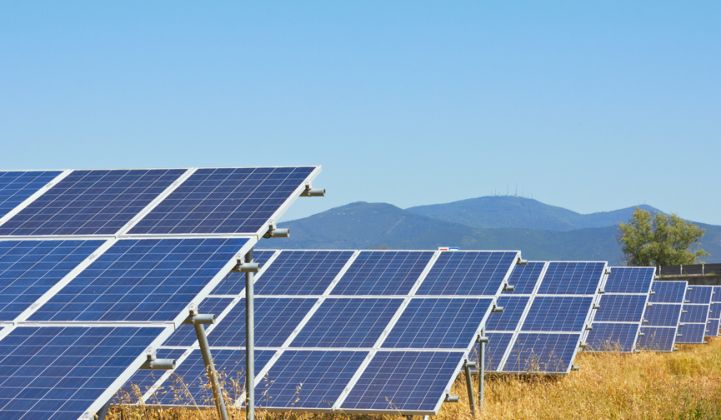There was a moment in 2013 and early 2014 when utility-scale solar hit a snag in America. California utilities were reaching the upper limits of their renewable energy mandates, concentrating solar power costs were not coming down as expected, and investors had turned their attention to the booming residential PV market.
But that moment passed fairly quickly. Moving into the second half of 2014, utilities all around the country signed an unprecedented number of contracts for utility-scale PV projects -- in large part because the technology had gotten so cheap. California had largely dominated the market since 2010, but suddenly utilities in Colorado, Minnesota, Utah and Kentucky were inking deals for large projects below the price of natural gas, completely separate from state mandates.
Today, utility-scale solar continues to hit cost and generation records. There are now more than 7 gigawatts of PV projects slated for completion around the country next year. In June, Austin Energy revealed that the average bid from developers in the second round of a 600-megawatt procurement were averaging below 4 cents per kilowatt-hour. And in March, California became the first state to generate 5 percent of its electricity from utility-scale solar power plants.
Here's another notable record: this week, the U.S. government's energy research arm showed that generation from utility-scale solar power plants is 31 times higher than it was a decade ago. (Note: EIA defines utility-scale solar as any project over 1 megawatt; GTM defines it as any project on the utility side of the meter.)

Utility-scale solar now accounts for just over a half percent of U.S. electricity production. Add in the 700,000 distributed projects around the country -- which make up 45 percent of U.S. installed capacity -- and solar generation is over 1 percent of production.
But the most compelling part of this EIA data set isn't the surge in overall generation. It's the shift in solar generation itself.
From 2005 to 2012, concentrating solar power saw a resurgence of investment after years of virtually no activity. Over that five-year period, the technology contributed 85 percent of overall solar generation. After 2011, as PV development costs fell and CSP costs stagnated, that dynamic flipped. More than 86 percent of total solar electricity came from PV as of last year.



